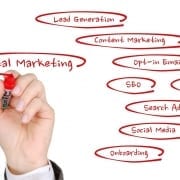How Do Buyers Choose One Solution Over Another?
Your solution matches the buyer’s need perfectly. You like them, they like you, you’ve had coffee/a meal/a powerful meeting or two, and best of all they recognize they need your solution. And then they buy from someone else. Or not at all. Or it takes them much longer than they anticipated. What happened? Are they stupid? Did they lie to you? Are they stalling? Are they making an emotional decision?
Not stupid. Didn’t lie. No emotional decision making. Maybe the need shifted, or the two new members of the Buying Decision Team needed time to consider their buying criteria, or they were able to get a partial solution from a current vendor. As outsiders, we’ll never know for sure. But one thing we do know: The initial – and most time consuming – reason that a sales cycle takes the time it takes involves getting the right decision makers aboard to figure out how to manage any change involved. And only when all of the right folks are assembled can buyers understand their criteria for choosing a solution.
In fact, we’ll never know how buyers choose one solution over another so long as we’re using the sales model alone. Without adding some Buying Facilitation® components sellers have a tough time becoming part of the change management process that buyers must manage to not only implement the solution, but actually define their criteria for solution selection. Remember: buyers have a change management problem before they have a solution choice problem.
Buying Criteria
Here are some questions to recognize what buyers need in order to have the right criteria to figure out their solution selection process:
- Has everyone who will touch the solution defined their criteria for what they seek to achieve from a new solution?
- Is every person who needs to be on the Buying Decision Team included? Every person?
- Do they know how they will implement the solution and ensure the new and old will work together?
- How will they prioritize the timing and resource for bringing in a new solution to avoid disruption?
- How will a new solution effect job descriptions, relationships, daily responsibilities and activities?
Generally, when we meet a prospect, they haven’t figured out all of the above and the full complement of people aren’t on board yet. Until they do, they can’t buy – regardless of how well our solution matches the need they discuss with us.
The choice of the actual solution is the very last thing the buyer does: until or unless there is appropriate buy-in and everyone who touches the new solution knows how to implement, and all change management criteria have been met, and everyone on the Buying Decision Team has similar buying criteria, they won’t buy – regardless of how friendly you are, or how well your solution meshes with their need. Indeed: they cannot understand the full set of parameters of their need until all of the right players are on board.
Think about making a purchase yourself. Well before you hand over your money, you’ve had to make internal decisions. Do you need X right now? Do you need to do Y first? How will your colleagues/family be involved? How will your behaviors change – and how much change are you willing to take on? Do you wait until a new version comes out? Do you need to have a handover or integration or learning curve between the old and new… and how will that get done? When do you have the time to research, change, discuss? Who do you want to get ideas/input from?
It’s not about the solution – until it is.
Help Buyers Facilitate Their Change Decisions
How do you plan on helping your prospects think through all of the issues they’ll need to manage prior to being able to buy your solution? How will you enter the conversation given that a prospect’s need and your solution are the last things they need? That’s why you’re currently merely closing the low-hanging fruit: you’re entering at the end of their decision making and not facilitating them through their change where most of the action takes place.
Buying Facilitation® is change/decision/systems focused and not a solution-placement model like sales is. But it will help you help buyers manage their change. They have to do this anyway – with you or without you and with just the sales model alone, you cannot be part of their change process. After all, if they have no road map to thinking it all through, it will end up being a long, messy process that will seriously bias the timing of the purchase and delay the sale. But you can help guide them through all of the ins and outs of making the necessary decisions and getting the right people on board.
Yes, it’s a different skill and focus than just using sales alone. But would you rather sell? Or have someone buy? The sales model places solutions; Buying Facilitation® facilitates the buying decision process. You need them both.
About the Author














Leave a Reply
Want to join the discussion?Feel free to contribute!